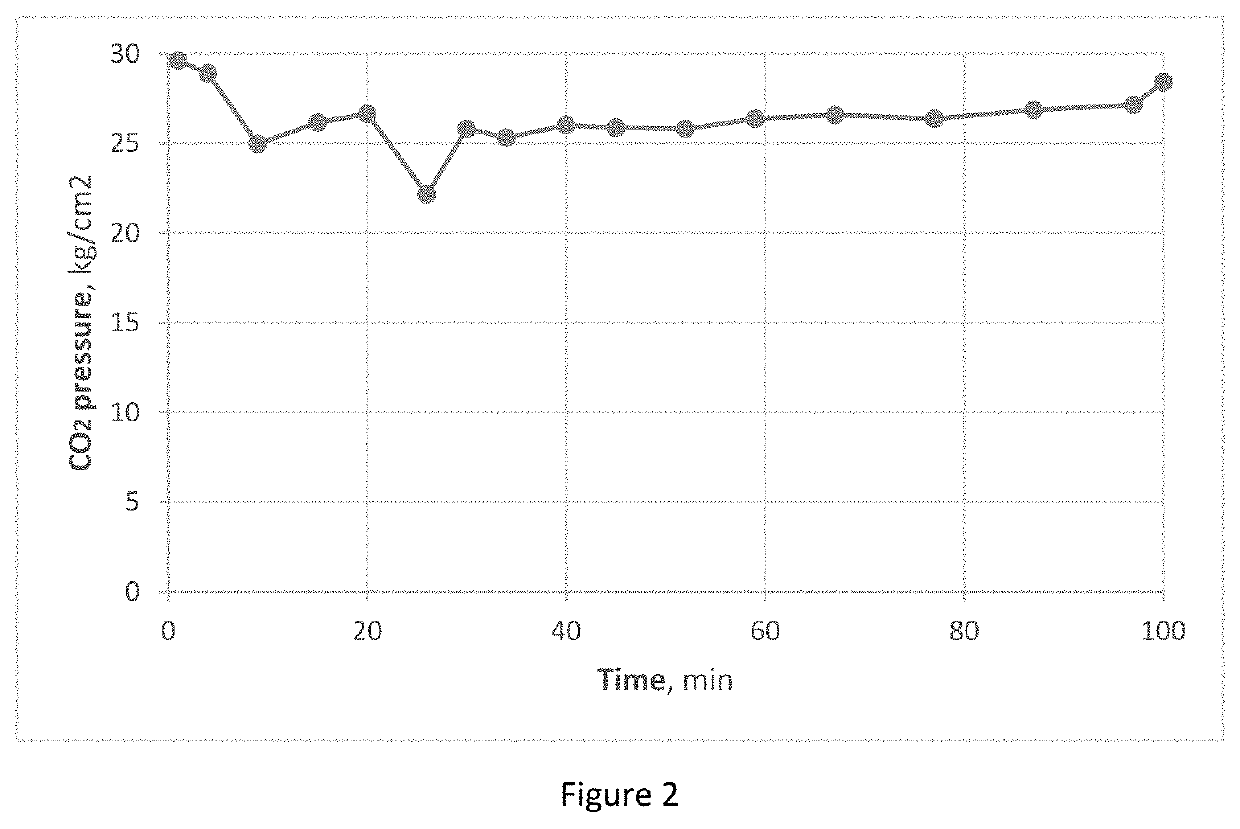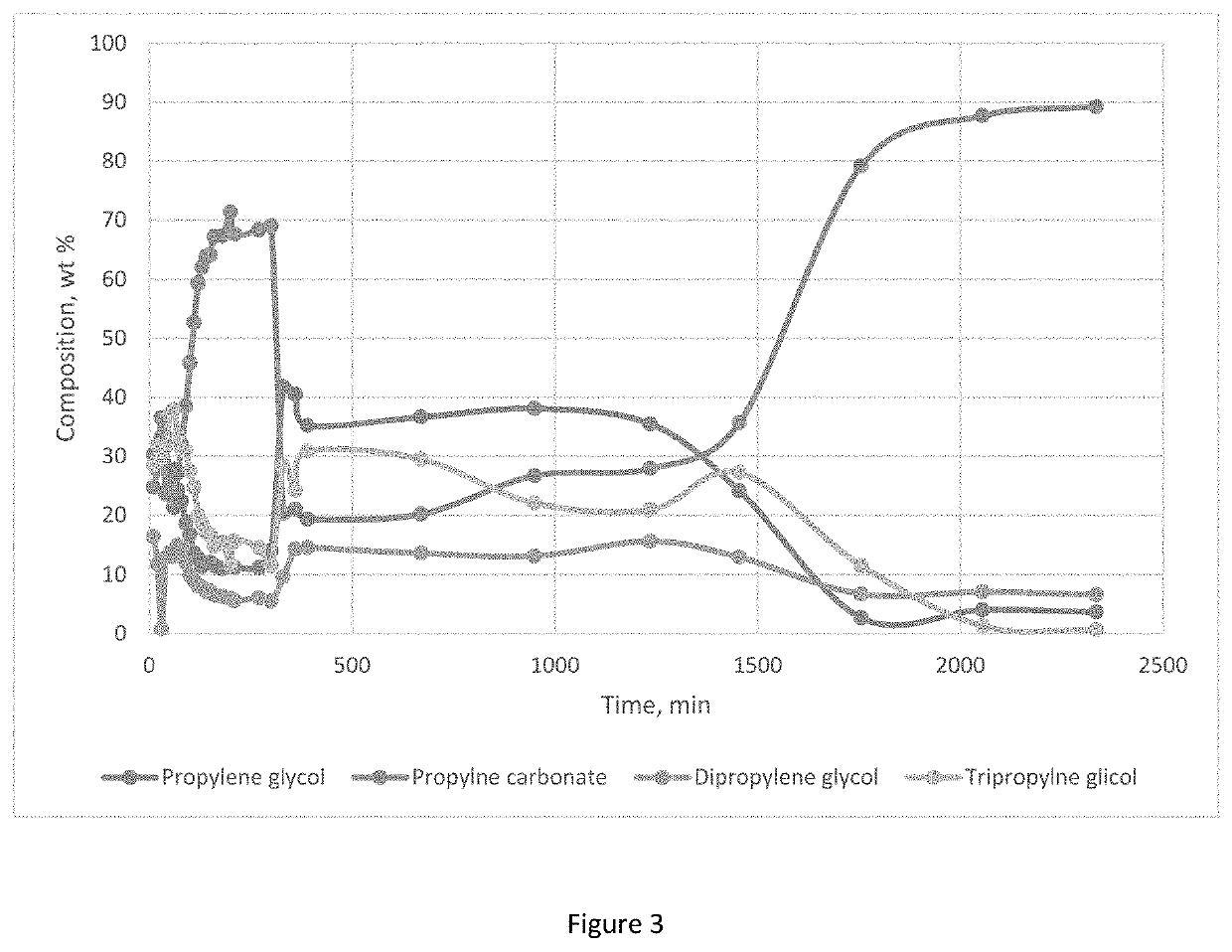Catalytic formulation for producing propylene cyclic carbonate from carbon dioxide using a potassium iodide catalyst
a potassium iodide catalyst and propylene cyclic carbonate technology, applied in the field of catalytic materials, can solve the problems of concomitant performance decline, and achieve the effect of increasing the useful life of these materials and fast deactivation
- Summary
- Abstract
- Description
- Claims
- Application Information
AI Technical Summary
Benefits of technology
Problems solved by technology
Method used
Image
Examples
example 1
Synthesis of the Potassium-Iodide-Based Catalyst
[0056]The first stage in the preparation of this catalyst consists in the dissolution of 15 g of poly(vinyl alcohol) in 300 mL of water at 90° C. with constant stirring. When it gets cold, a solution consisting of 92 g of KI and 60 mL of water is added and stirred until complete homogenization.
[0057]Afterward, such solution is evaporated in a stove at 50-60° C. The obtained solid is ground and sieved.
[0058]The other employed components are: 10 g of NaH2PO4, 12 g of activated carbon, 114 g of Catapal B® and HNO3 at 5% v / v was used as wetting agent.
[0059]The integration method of the materials consists in mixing, gradually, the different solids by adding the necessary amount of nitric acid until forming a homogeneous paste. The percent composition of the solid catalyst on wet and dry basis (at its final stage) is shown in Table 1.
TABLE 1Catalyst composition on wet (recently prepared)and dry (after thermal treatments) bases.Composition on...
example 2
[0062]The catalytic material used in this example features the same components and follows the same methodology described in Example 1, except for the absence of NaH2PO4. The reaction was performed under the same conditions of Example 1 and the obtained results were: yield=89.3% and selectivity=98.96%.
example 3
[0063]In this example a catalyst similar to the one in Example 1 was synthesized, but without poly(vinyl alcohol). The reaction results using this catalytic material were: yield=88.61% and selectivity=96.83%.
PUM
| Property | Measurement | Unit |
|---|---|---|
| temperature | aaaaa | aaaaa |
| temperature | aaaaa | aaaaa |
| molar ratio | aaaaa | aaaaa |
Abstract
Description
Claims
Application Information
 Login to View More
Login to View More - R&D
- Intellectual Property
- Life Sciences
- Materials
- Tech Scout
- Unparalleled Data Quality
- Higher Quality Content
- 60% Fewer Hallucinations
Browse by: Latest US Patents, China's latest patents, Technical Efficacy Thesaurus, Application Domain, Technology Topic, Popular Technical Reports.
© 2025 PatSnap. All rights reserved.Legal|Privacy policy|Modern Slavery Act Transparency Statement|Sitemap|About US| Contact US: help@patsnap.com



